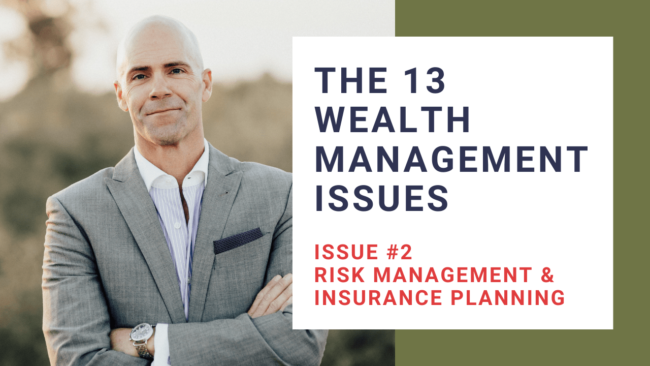
Avoid The Three Costliest Investing Mistakes An Investor Can Make
Avoid Three Costliest Investing Mistakes
It has been said that investing is simple, but not easy. I would agree with that statement, but also would add that investors like to complicate things. Given our inclination to complicate things, we often find investing to be complex. And it isn’t just individual investors that complicate things. The investment industry does it as well, but for different reasons.
Individual investors like to complicate things because we erroneously believe that something complex must be good. It fuels the illusion of intelligence. If something is so complex we can’t understand it, it must be really good! “Only the smart people get it, so I will hire them,” we think. Enter industry professionals. They like to complicate things to justify their fees. Certainly, you will pay good money if it is a strategy you can’t do on your own, especially if you don’t even understand it. So long as the backtested strategies look good and the marketing material is persuasive, investors will abound.
History shows that complex strategies do not outperform simple strategies a 3rd grader could understand. What history does show is that it if investors can just avoid a few simple mistakes, they can do quite well. Notice, this is not about doing a bunch of things right. This is about avoiding a few behaviors. I call these the three costliest mistakes investors can make.
1) Selling at the Bottom
The biggest mistake an investor can make, and most detrimental to their financial well-being, is to sell a diversified portfolio of stocks after experiencing losses. The belief/expectation/opinion of future losses is completely irrelevant because no one can predict the future. And the markets tend to do the craziest things. There are many examples of investors losing significant money because they meant well, but acted irresponsibly.
March 2020. The biggest loss we experienced in such a short period of time. A global pandemic that literally shut down economies across the globe. And a fierce snap-back rally that was the quickest on record. The investor who sold after being down 30%, converted a temporary paper loss to a permanent and personal loss. Once you get out, you have to guess when to get back in. You are no longer an investor, you are a speculator. Good luck.
While selling low can feel very good at the time, the tradeoff is that you may need additional years to reach your financial goals. If you estimate a 7% return per year and miss out on an unexpected and unprecedented 30% rally, you will add roughly 4 years to reaching your goal. That is quite a price to pay for the temporary emotional relief that comes from going to cash.
2) Sitting in Cash Waiting to Invest
If you find yourself with a cash windfall due to a bonus, inheritance, or another liquidity event, the best thing to do is invest it. The reason is simple. Because, historically, the market has been up 3 out of 4 years. But there is a strong temptation to sit on the cash and wait for a better entry point. What if you put in all that money right before the market goes down 25%?
Such aversion to loss can cause well-meaning investors to sit on cash while the market heads higher, waiting for the next pullback. The issue here is that the investor is too concerned about the next 25% move and not concerned enough about the next 100% move.
Investors only have two responsible choices here. Either invest the money all at once or create a dollar-cost-averaging scheme to systematically invest over a time period. The latter may help those investors truly fearful of a near-term market drop. Sitting in cash as if some bell will ring when the market hits bottom is irresponsible to your financial future. Anyone engaging in this activity should add some years to reach their financial goals, or reduce their future lifestyle.
3) Performance Chasing
We all love to own what is doing best, and avoid those things doing worst. It’s both financially and psychologically beneficial. Owning the best ensures we achieve the best return for a given time period (progressing toward financial goals) and it feeds our ego. A double whammy!
Investors are constantly buying what is hot and selling what is not, which regrettably results in much lower performance than a simple buy-and-hold strategy. This is because yesterday’s winners are seldom tomorrow’s winners. Markets are cyclical. Always have been. We don’t know when something will outperform, and frankly, once we put our ego aside, there is no reason for investors to outperform some benchmark. In fact, research shows that the more investors try to outperform by switching strategies, the worse they do (See DALBAR, Morningstar).
I have never met an investor who says their ultimate financial goal is to always outperform a benchmark (and our neighbor). Usually, they say something like financial independence or retirement with specific spending goals in mind. Nevertheless, because the media and hedge funds are all about besting one another, our attention and even beliefs are hijacked by this erroneous and potentially destructive investment behavior.
Keep Investing Simple
The three costliest mistakes are easy to make because, in the moment, the mistakes don’t feel like mistakes. The key word there is feel. Because we are both thinking and feeling creatures, we need to balance the two. In many aspects of life, feelings help us make wise decisions. But not when it comes to investing.
When investing, you can either do what feels right or what is right. No matter what you do, avoiding these three costly mistakes will help you keep investing simple, and get you closer to pursuing your financial goals – despite how you may feel.
Conclusion
Remember, investing is indeed simple, but not always easy. By avoiding the three costliest mistakes – selling at the bottom, sitting in cash waiting to invest, and performance chasing – you can simplify your investment journey and move closer to your financial goals. Keep these lessons in mind and focus on what is right, not just what feels right. Happy investing!
If you’re considering working with us here at Mosaic, we invite you to learn more about who we serve and how we help them. You can also contact us with any questions you have.
By Marcus E. Ortega, ChFC, RFC | Investment Advisor Representative | CEO of Mosaic Financial Associates & Orthopaedist Advisory Group | Securities and advisory services offered through Cetera Advisors LLC, Member FINRA/SIPC, a broker/dealer and a Registered Investment Advisor. Cetera is under separate ownership from any other named entity.
(c)The Behavioral Finance Network
Investments in securities do not offer a fix rate of return. Principal, yield and/or share price will fluctuate with changes in market conditions and, when sold or redeemed, you may receive more or less than originally invested. No system or financial planning strategy can guarantee future results.







